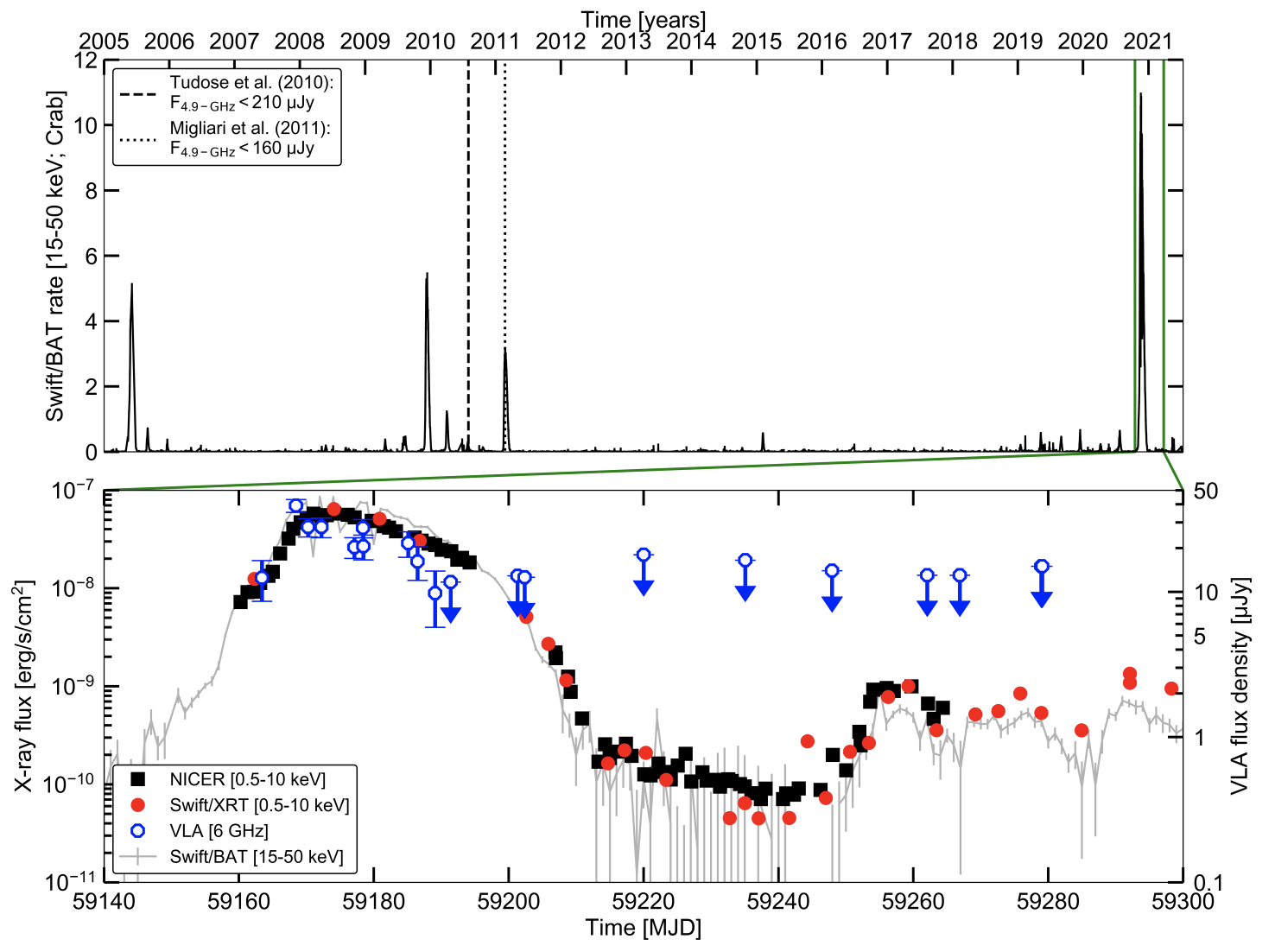NICER / ISS Science Nugget
for October 6, 2022
X-ray/Radio Correlation Probes Jet Outflows in High-Mass X-ray Binaries
Among stellar binary systems containing neutron stars, a subclass comprises those in which the companion star is luminous, massive (type "B"), and drives an equatorial flow of hot gas in a so-called "excretion" disk (resulting in a type designation of "Be"). Such Be/neutron-star binaries tend to have highly elliptical orbits and recurring X-ray outbursts as the two stars come to closest approach (periastron) once in each orbit. The outbursts have varying durations and intensities, with "giant" or Type 2 outbursts being the rarest and most interesting - it is thought that these represent episodes in which a large quantity of matter is transferred from the Be companion to the neutron star, overwhelming the latter's strong magnetic field to form a hot accretion disk and flow onto the neutron star surface, generating powerful X-ray emission. For the Be X-ray binary (BeXRB) 1A 0535+262, discovered some 45 years ago, weak outbursts are seen consistent with its 111-day orbital period, but giant outbursts have been recorded only at intervals of several years. The brightest by far in 15-plus years of monitoring with NASA's Swift observatory, and the first during NICER's time on-orbit, began in November 2020.
A team led by J. van den Eijnden (Oxford Univ.) has reported, in a paper recently accepted for publication in the U.K. journal Monthly Notices of the Royal Astronomical Society, that radio emission from 1A 0535 was detected during the 2020-21 outburst that was closely monitored by NICER. The radio brightness tracked the X-ray brightness (note log scales in lower panel) through the peak of the outburst. Radio emission in stellar binary systems is attributed to the presence of collimated "jet" outflows produced by the accretion process; prevailing models of jet formation and launching suggest that strongly magnetized accreting neutron stars should not produce jets, but a growing body of evidence - namely, the detection of radio emission consistent with an origin in jets - has prompted a reevaluation of these models. The new study of 1A 0535 and other BeXRB systems reinforces a small number of preexisting measurements of the ratio of X-ray to radio brightness in these systems, finding that this ratio is two orders of magnitude smaller for high-magnetic-field neutron stars than it is for low-field neutron stars, and several thousand times smaller than it is for black holes. The jets produced by BeXRBs are thus substantially fainter and can only be detected for especially luminous or nearby systems. Future coordinated radio and X-ray observations are expected to further elucidate the coupling of accretion inflow and jet outflow in all classes of stellar binary systems.

Figure:
Long-term (top panel) and recent (bottom zoomed-in panel) history of the radio and X-ray brightness of the high-mass X-ray binary 1A 0535+262. The black and gray traces in the top and bottom panels, respectively, correspond to measurements made in high-energy X-rays by the Burst Alert Telescope on NASA's Swift observatory; the dashed and dotted vertical lines represent radio observations that resulted in non-detections. NICER (black squares) and Swift X-ray Telescope (red circles) measurements of low-energy X-rays tracked the system's giant outburst in 2020, during which the ground-based Very Large Array telescope successfully detected radio emission from 1A 0535 for the first time. Figure from Van den Eijnden et al. (2022).
<< Previous
Main Index
Next >>